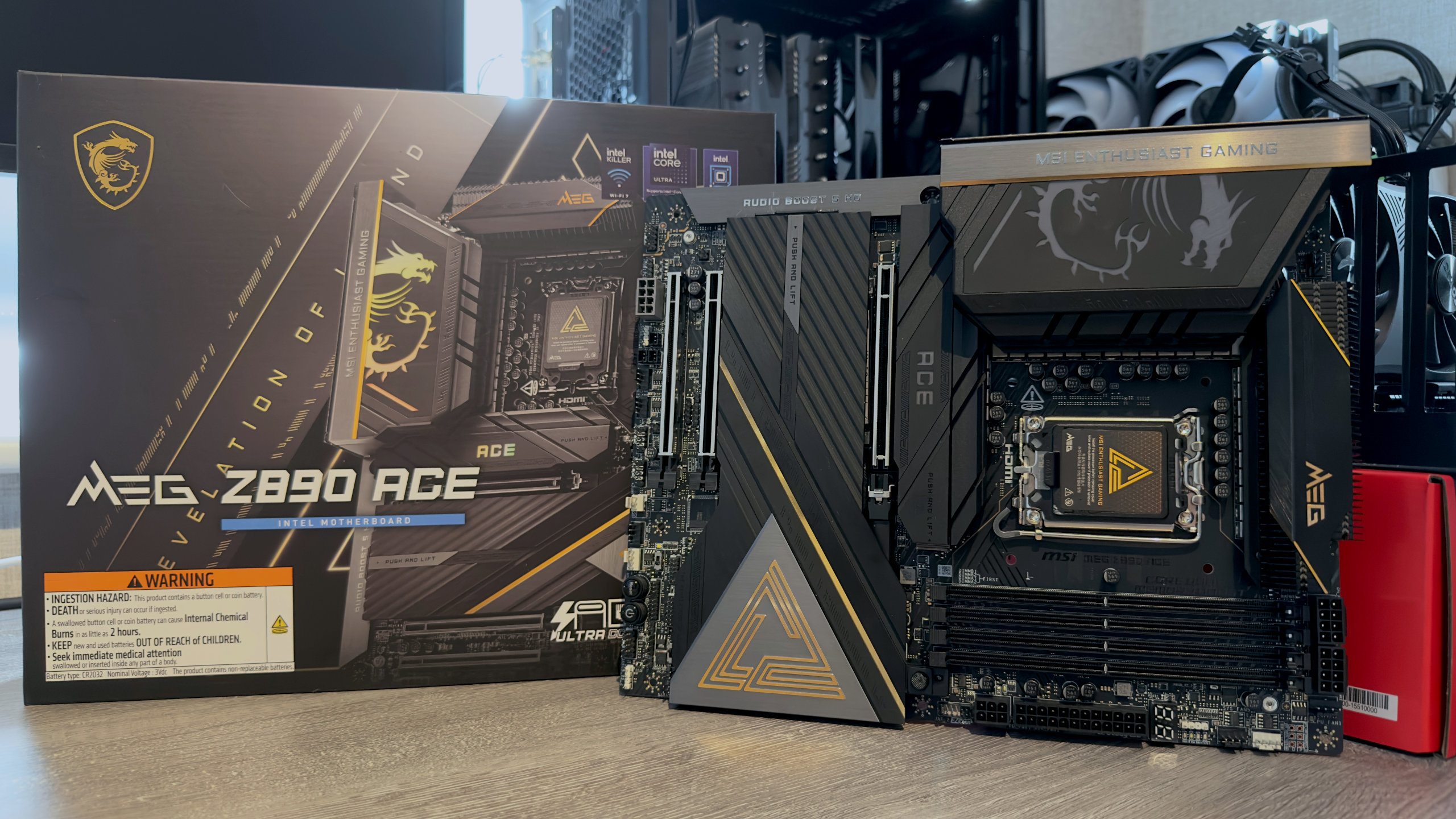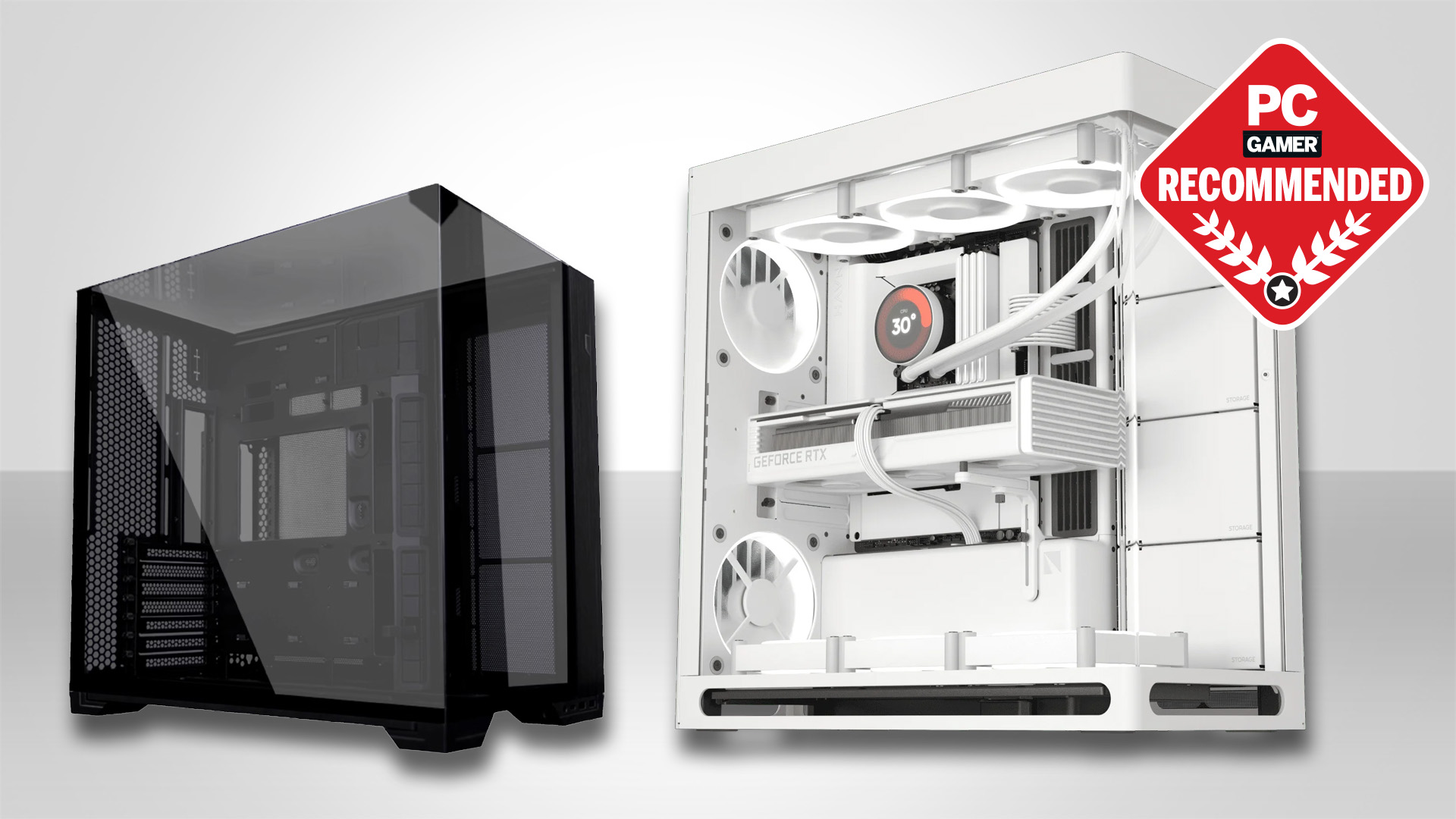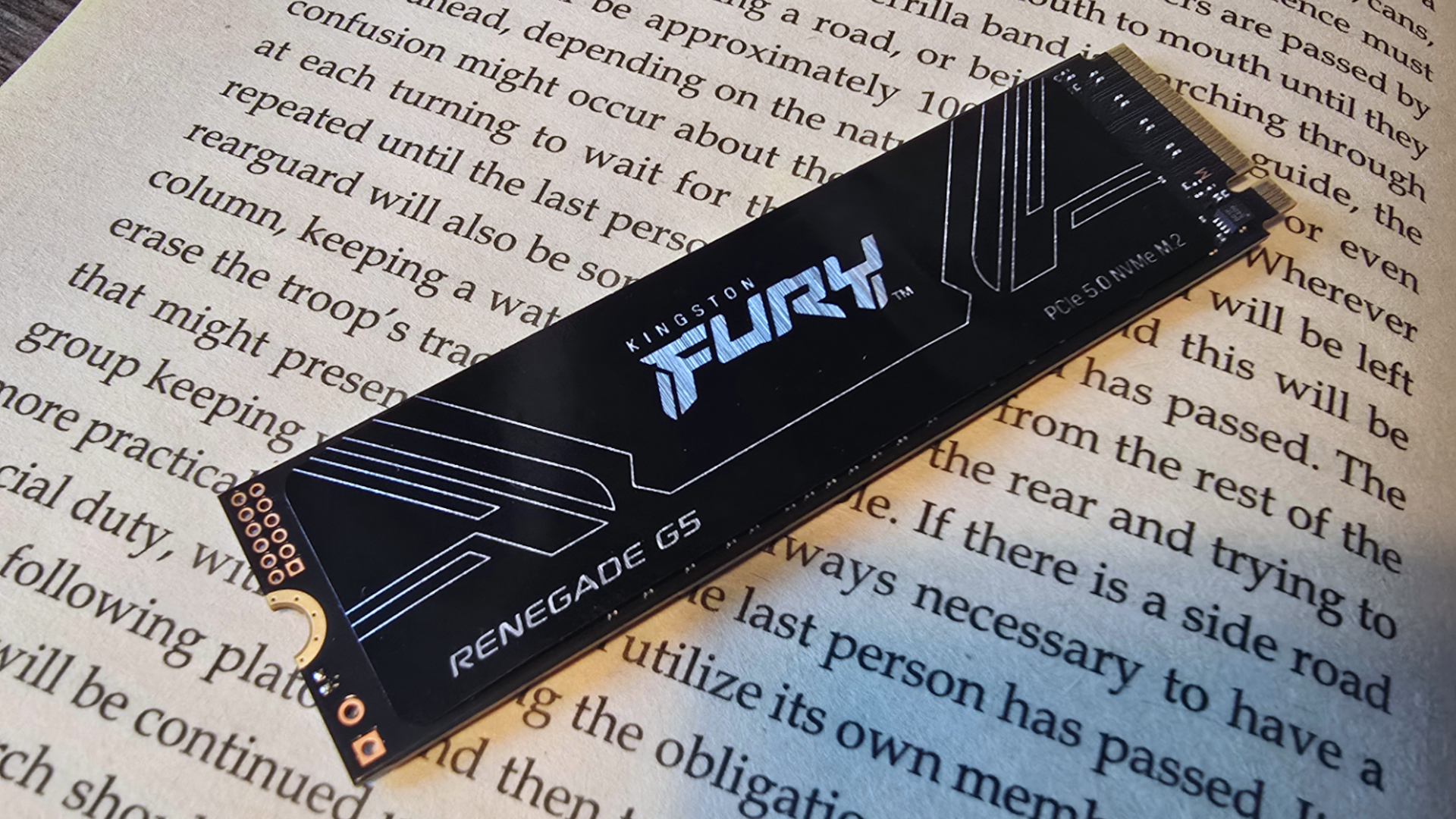Our Verdict
The premium price of the MSI MEG Z890 Ace creates a raft of expectations, and in terms of raw performance, it arguably fails to meet them. However, it counters this with a colossal number of high-speed USB ports and M.2 slots. One for the peripheral hoarders only.
For
- 13 rear USB 10 Gbps ports
- Dual Thunderbolt 4 ports
- Five M.2 slots
- Lots of user-friendly features
Against
- Very expensive
- You don't get $500 worth of performance
- PCIe and M.2 slot compromises
PC Gamer's got your back
The MEG Z890 Ace is one of MSI's most expensive Intel LGA 1851 motherboards around. It's not the absolute priciest, as that honour goes to the $1,000 Z890 Godlike. But while the Ace is half the cost, it still sports a very steep price tag for a mere motherboard. So what exactly are you getting for $500 that you don't get with a $250 model?
Let's start with the most eye-popping feature, the number of USB ports on the rear IO panel. At first glance, it would seem that you get four Type-C and 11 Type-A sockets for USB devices, but that's only half the story. Like many mainstream and high-end Core Ultra 200S motherboards, the MEG Z890 Ace sports two Thunderbolt 4 ports.
These support up to 40 Gbps in Thunderbolt 4 mode, 20 Gbps in USB4 mode, or 10 Gbps when operating as USB 3.2 Type-C sockets, as well as providing DisplayPort 2.1 outputs. The other Type-C connections are 10 Gbps USB 3.2, but here's the really impressive part: So are all the other Type-A ports.
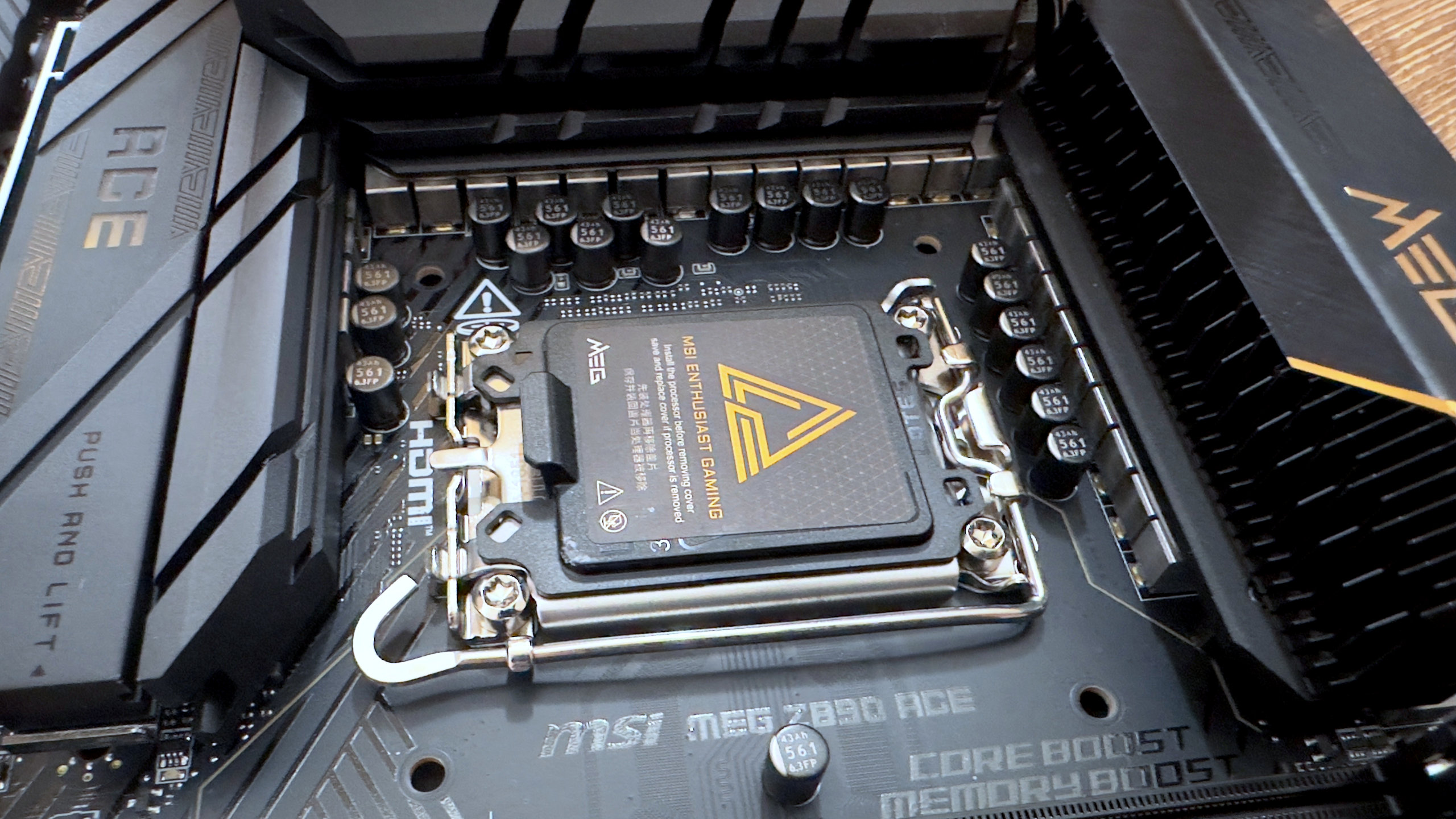
Socket: Intel LGA1851
Chipset: Intel Z890
CPU compatibility: Intel Core Ultra 200S desktop
Form factor: ATX
Memory support: DDR5-4800 to DDR5-9200+ (OC), up to 256 GB, CUDIMM supported
Storage: 5x M.2, 4x SATA
USB (rear): 2x Thunderbolt 4/USB4 Type-C 40 Gbps, 2x USB 3.2 Type-C 10 Gbps, 11x USB 3.2 Type-A 10 Gbps
Display: 1x HDMI 2.1, 2x DisplayPort 2.1 via Thunderbolt 4
Networking: Marvell AQC113CS 10 Gbps LAN, Intel Killer BE1750x Wi-Fi 7
Audio: Realtek ALC1220P
Price: $496 / £600 / AUS$854
Yes, that's right. There isn't a single 5 Gbps or USB 2.0 socket, just a veritable wall of high-speed peripheral connectivity. If you care not one jot about gaming performance, thermal levels, or anything to do with storage, then the MEG Z890 Ace is well worth considering for that alone, assuming the price tag doesn't put you off.
But there's even more to drool over. The motherboard is home to three PCIe expansion slots and five M.2 SSD connectors. In the case of the former, two are Gen 5 and are hooked up directly to the CPU, with the remaining slot being Gen 4 and handled by the Z890 chipset. However, while they're all physically x16 slots, only the primary one is electrically x16; the others are x8 and x4, respectively.
The compromises continue with the M.2 slots, because while three of them are connected to the CPU, and they're all either Gen 4 or Gen 5 in capability, there's a fair degree of PCIe lane sharing between the PCIe and M.2 slots.
Basically, the CPU and chipset only have so many to go around, so if you load up every slot with a device or SSD, you'll have to sacrifice some performance.
Keep up to date with the most important stories and the best deals, as picked by the PC Gamer team.
There's no way around this limitation, unfortunately, but at least none of the slots are fully disabled if you choose to use them all, and they don't affect the USB ports at all.
As with all of MSI's latest motherboards, there's a host of user-friendly features to make your PC life that little bit easier. All of the M.2 heatsinks and the primary PCIe slot for a graphics card have quick-release mechanisms, dedicated buttons for clearing and flashing the BIOS, debug LEDs and a display to indicate boot process stages and errors, and even the Wi-Fi antenna just pushes into its sockets (no screws involved).
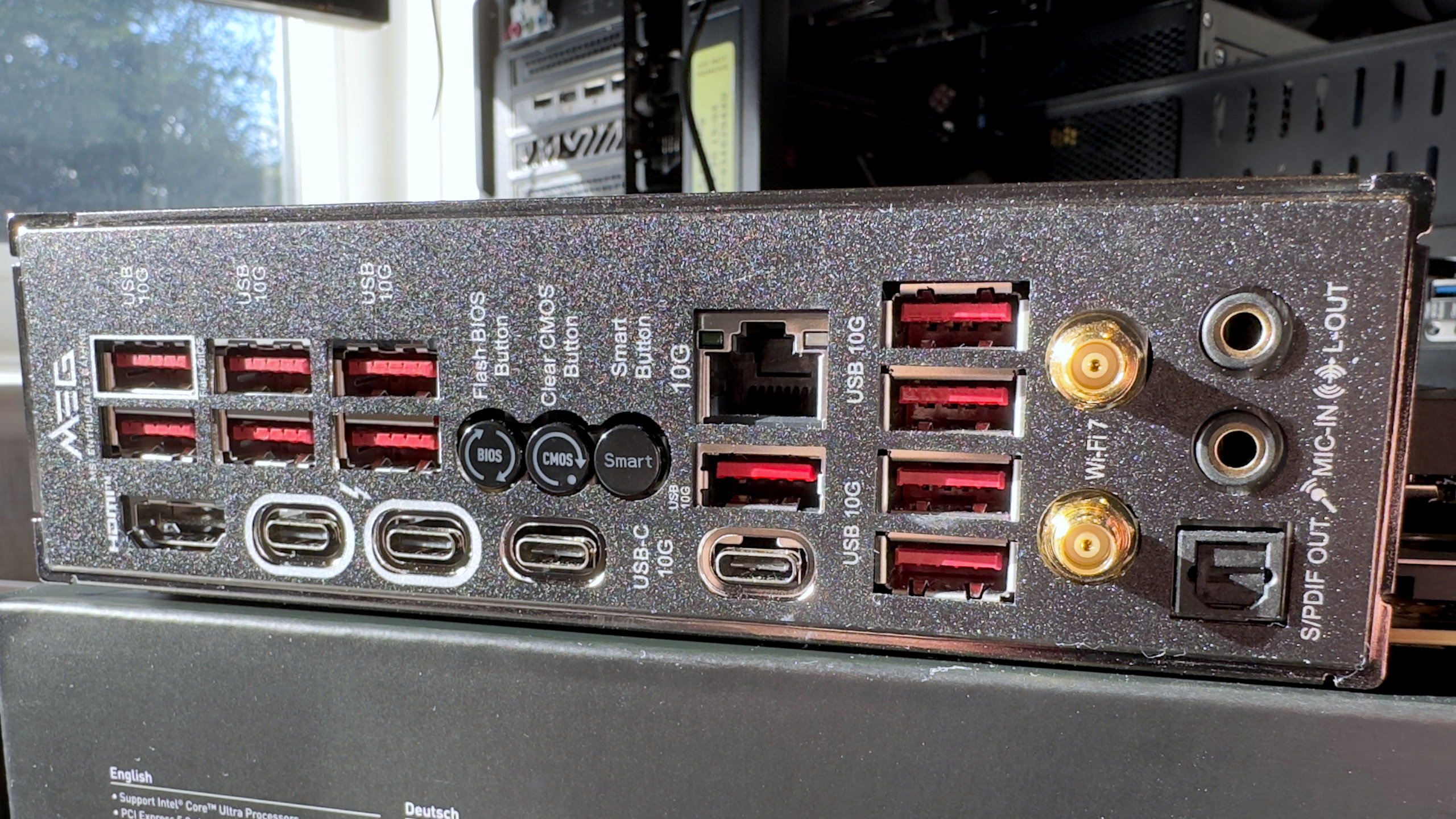
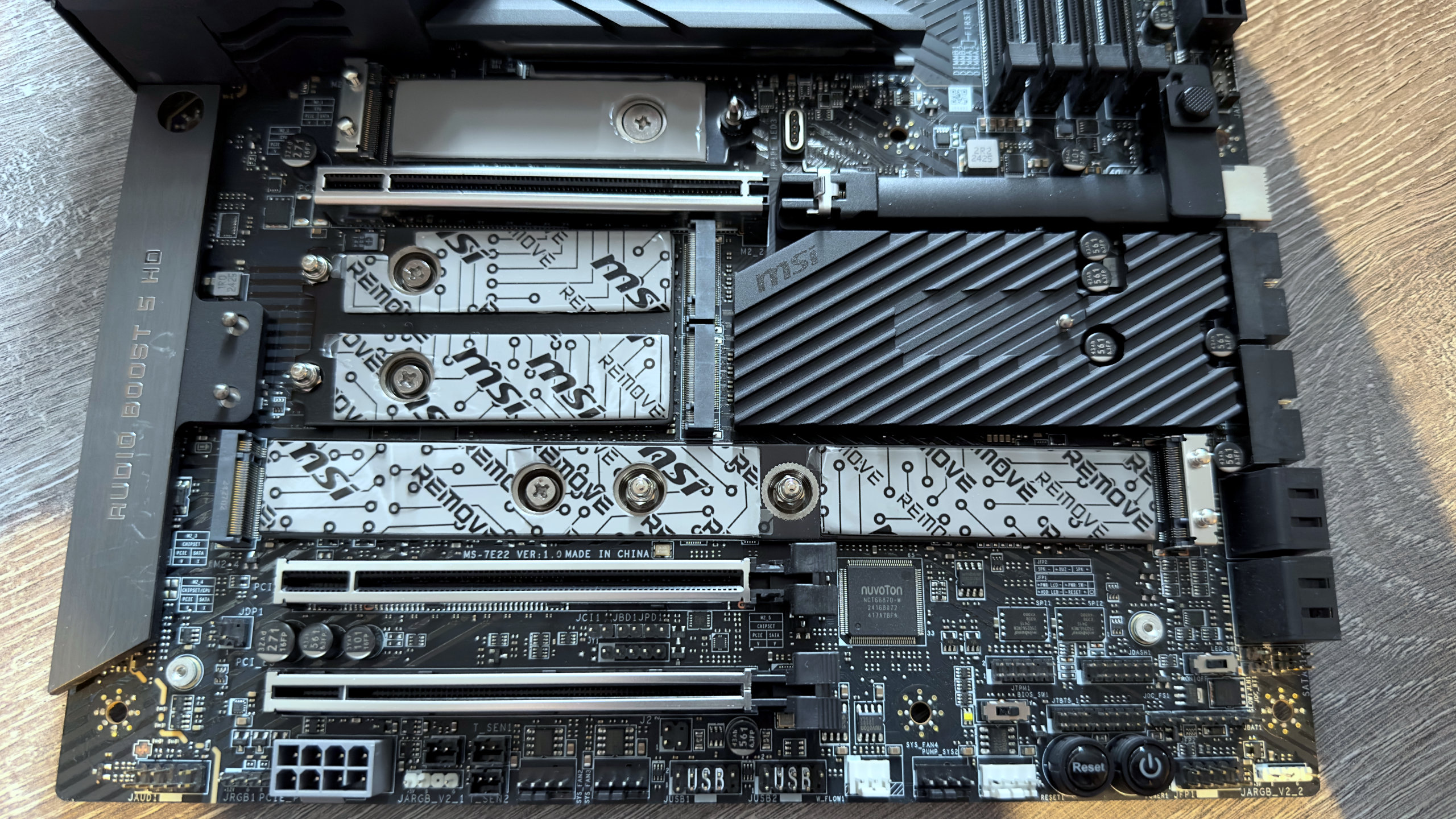
The UEFI is logically set out and easy to use, though once you delve into the advanced section, it helps to have a Master's degree in electronics to decipher the terminology. That's entirely normal, of course, and certainly not meant as a criticism of MSI's interface, but given that today's motherboards support a high-resolution output, it's a shame that more information isn't displayed about what many of the settings actually do.
The overall build quality of the MSI MEG Z890 Ace is very high, as one would expect from a $500 motherboard. It's helped by the substantial metal support panel on the rear of the board, and although it makes the Ace very heavy, there's practically zero chance of it warping when loaded with massive graphics cards.
With a multitude of other features, many relating to power and overclocking, you'd think that using a Core Ultra 9 285K in the MEG Z890 Ace would result in premium-level performance. Surprisingly, that's not the case.
PC Gamer test rig
CPU: Intel Core Ultra 9 285K | Cooler: Arctic Liquid Freezer III 280 AIO | RAM: 32 GB Lexar Thor OC DDR5-6000 | GPU: Zotac GeForce RTX 4070 | Storage: 2 TB Corsair MP700 | PSU: Thermaltake ToughPower PF3 1050 W | OS: Windows 11 25H2 | Chassis: Open platform | Monitor: Acer XB280HK
The motherboards in our benchmark results were tested over a long period of time, so some of the differences will be due to BIOS, microcode, and Windows updates. However, I've been using this particular motherboard in test rigs since it first launched in October 2024, and it's never been top-tier when it comes to performance.
For example, our Factorio test stresses the CPU's cache and memory systems, with the latter relying on RAM timings employed by the motherboard. The Z890 Ace was slower than this 12 months ago, but it's barely improved since then.
The overall gaming performance can't be described as being bad, as some of it is down to quirks of Intel's Arrow Lake architecture, but that $500 price tag carries certain expectations. A year ago, it was even more expensive ($650 at launch), and you would have surely been disappointed by the gaming results if you'd bought one back then.
It's a slightly better situation when it comes to content creation and CPU-heavy benchmarks, but once again, not what you'd expect from such an expensive motherboard. One possible explanation for the so-so results is that MSI could be using conservative RAM timings to improve stability and support for ultra-fast CUDIMMs.
However, the Zzip results suggest that this might not be the case, as they're pretty good for the most part. Compressing lots of files very rapidly demands high memory bandwidth and low latencies, so if the MEG Z890 did have slow timings, they'd show up here.
That said, given the gaming results, if your content creation apps are heavily dependent on RAM performance, you might want to consider the Asus ROG Maximus Z890 Hero over the MSI MEG Z890 Ace. They're both just as pricey and feature-rich as each other, but the Asus board doesn't exhibit the MSI's variable performance.
Perhaps the biggest surprise with the MSI MEG Z890 Ace is that despite being festooned with metal heatsinks across the board, its thermal performance is no better than motherboards that are half the price. Again, none of the figures are poor in isolation; it's only when you compare them to the competition that you begin to wonder just where all that money is going.
Well, the answer is simple: connectivity options. The veritable wall of USB ports and M.2 slots, along with a 10 Gbps LAN interface and Wi-Fi 7 module. Few other motherboards come close to the Ace in these aspects, especially the fact that every USB port on the rear IO panel is 10 Gbps or faster.
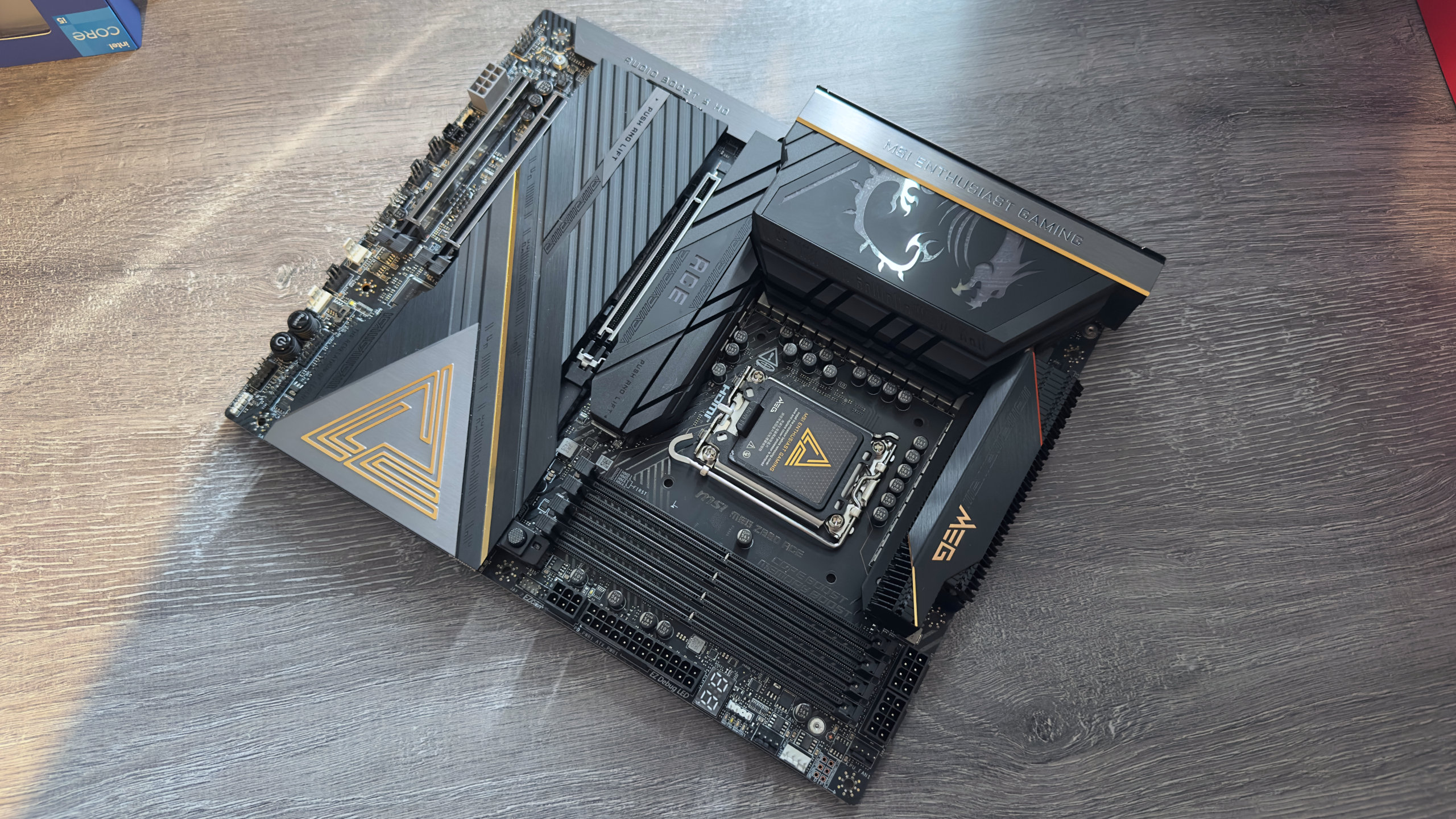
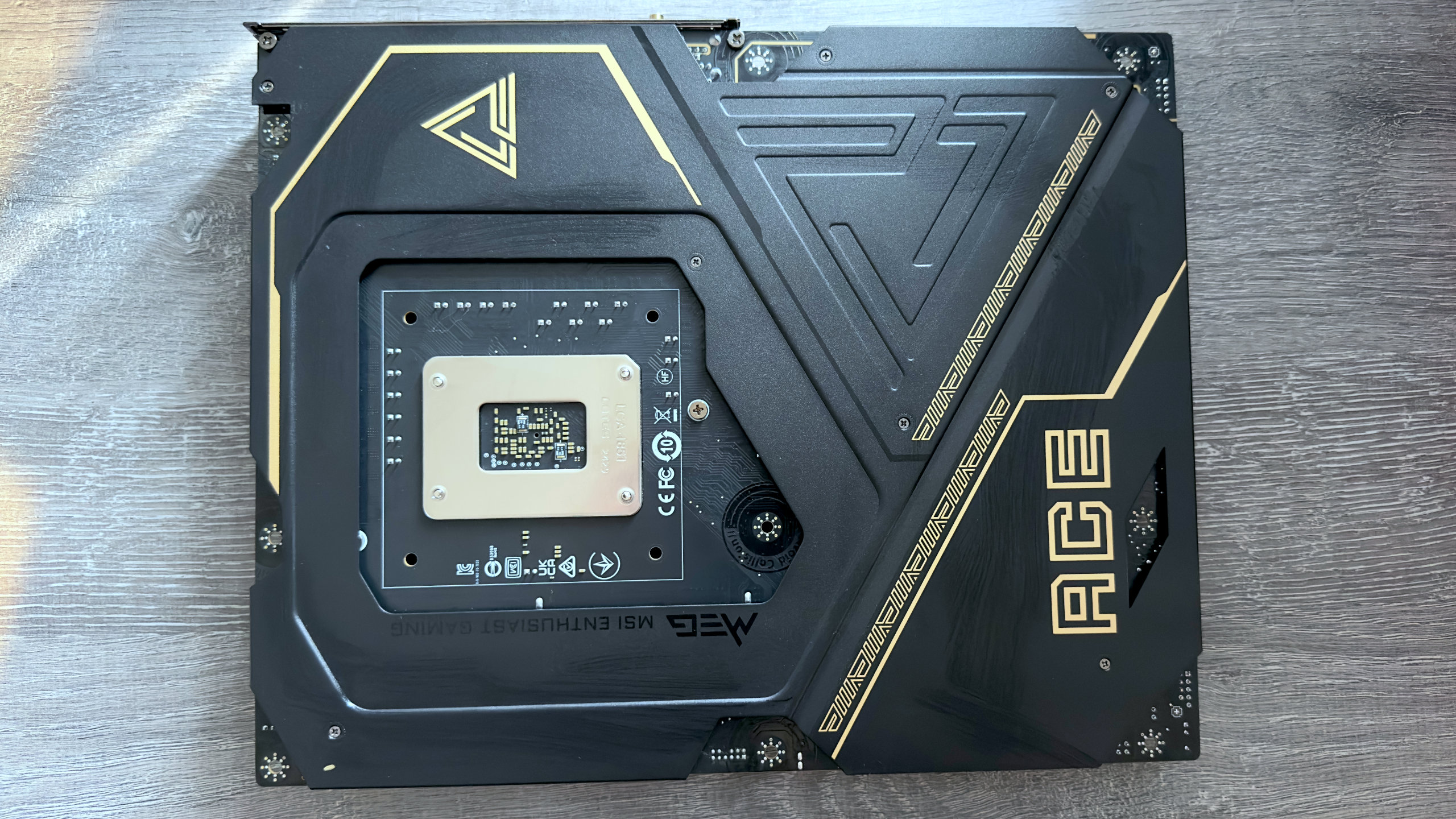
✅ You want a motherboard with lots of ports and expansion slots: With three PCIe and four M.2 slots, along with 10 rear USB and four SATA ports, the MSI Z890 Tomahawk can be loaded to the hilt with storage and peripherals.
❌ You're building a budget Arrow Lake gaming PC: There are cheaper Core Ultra 200S motherboards than the MSI Z890 Tomahawk, and many perform just as well when it comes to gaming.
Something else $500 is buying you is overclocking support. While Intel's Core Ultra 200S chips can't hit the same heights as its last-generation Raptor Lake processors in terms of raw clock speeds, significant gains can be found by overclocking the die-to-die (D2D) and E-core clocks. This is something the MEG Z890 Ace makes very easy to do, though how successful such endeavours are will depend heavily on the quality of the CPU.
But that's it, unfortunately. You might think that all those user-friendly additions, such as the quick-release mechanisms, are also part of the cost, but MSI's MAG Z890 Tomahawk WiFi has many of them too, and it's half the price of the Ace.
All of which means that the MSI MEG Z890 Ace is only going to appeal to a very specific PC user, and it's certainly not going to be one who's solely interested in gaming. Such enthusiasts will, of course, choose an AMD Ryzen 7 9800X3D over a Core Ultra 9 285K anyway, but diehard Intel gaming fans will be better served choosing the Gigabyte Z890 Aorus Elite.
On the other hand, if you have a small mountain of USB devices and SSDs all wanting a single home, then the MSI MEG Z890 Ace is certainly worth considering.
The premium price of the MSI MEG Z890 Ace creates a raft of expectations, and in terms of raw performance, it arguably fails to meet them. However, it counters this with a colossal number of high-speed USB ports and M.2 slots. One for the peripheral hoarders only.

Nick, gaming, and computers all first met in the early 1980s. After leaving university, he became a physics and IT teacher and started writing about tech in the late 1990s. That resulted in him working with MadOnion to write the help files for 3DMark and PCMark. After a short stint working at Beyond3D.com, Nick joined Futuremark (MadOnion rebranded) full-time, as editor-in-chief for its PC gaming section, YouGamers. After the site shutdown, he became an engineering and computing lecturer for many years, but missed the writing bug. Cue four years at TechSpot.com covering everything and anything to do with tech and PCs. He freely admits to being far too obsessed with GPUs and open-world grindy RPGs, but who isn't these days?
You must confirm your public display name before commenting
Please logout and then login again, you will then be prompted to enter your display name.
